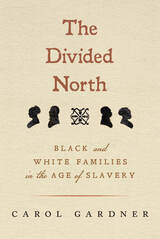8 start with L start with L
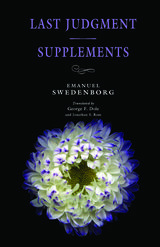
This volume comprises two short works, originally published separately, which describe the Last Judgment as Swedenborg claims to have witnessed it over the course of many months in 1757. In Last Judgment, first published in 1758, Swedenborg lays out how and why the Last Judgment occurred, explaining that history can be divided into a series of spiritual ages or churches. At the end of each age, evil threatens to overwhelm both the physical and the spiritual worlds, and the Lord restores balance between good and evil with a “Last Judgment.” Thus the 1757 Last Judgment, Swedenborg says, applied only to the souls of people who had lived since the time of Christ, and the reformation of the spiritual world allowed humanity to enter the next age with a new understanding of religion. In the second half of Last Judgment, Swedenborg describes how various types of people were judged, a theme he continues in the 1763 short work Supplements.
The new spiritual age that Swedenborg saw emerging during his lifetime is one of the foundational themes in his theology (a theme he explores more deeply in his later work, Revelation Unveiled, which is a commentary on the book of Revelation). In Supplements, Swedenborg succinctly introduces his understanding of the connection between heaven and earth and of how that connection plays out over the course of human history.
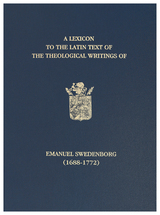
Beyond its use for scholars of Swedenborg, the Lexicon is also of great assistance to students and academics of history, philosophy, theology and science, and anyone who encounters texts written in Neo-Latin (the branch of Latin that was in use by learned writers and thinkers from the Renaissance period through to the Enlightenment and beyond). The Lexicon is beautifully and simply designed and easy to navigate. In addition to a preface by editor John Chadwick, this edition also features a new introduction by Jonathan S. Rose containing an important section on the morphology of Swedenborg’s Neo-Latin (as distinct from the morphology of classical Latin); an appreciation of the life of John Chadwick by John Elliott; an appendix with a detailed listing of the various Latin editions of Swedenborg’s theological works; and an appendix on Swedenborg’s use of the Latin Bible of Sebastian Schmidt.
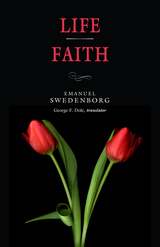
Life refers not to the life force that sustains us but to the way we live our lives. This short piece focuses on the concept of regeneration, or spiritual rebirth, as a process of consciously rejecting our own destructive impulses and internalizing love and goodness. It argues that the choices we make and the reasons we make them have everything to do with our salvation. Swedenborg includes a brief overview of the inner sense of the Ten Commandments as a way to understand the nature of the choice between good and evil.
In Faith, Swedenborg rejects the notion that faith can be a choice to believe things that make no rational sense. Instead, he defines faith as an inner recognition of what is actually true. He explores the complex relationship between faith and knowledge, and emphasizes that true faith can occur only in people who love others and treat them well.
Life / Faith is part of the New Century Edition of the Works of Emanuel Swedenborg (NCE), an ongoing translation series. The NCE series incorporates the latest scholarship and translation standards for a more accurate and accessible rendering of Swedenborg’s works. Traditionally titled The Doctrine of Life and The Doctrine of Faith, these short works are often published together with two others—The Lord and Sacred Scripture—under the title The Four Doctrines. These four titles will be published together in the forthcoming NCE hardcover annotated volume The Shorter Works of 1763.
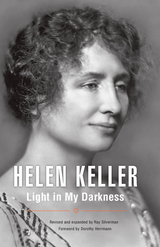
One of Time's women of the century, Helen Keller, reveals her mystical side in this best-selling spiritual autobiography. Writing that her first reading of Emanuel Swedenborg at age fourteen gave her truths that were "to my faculties what light, color and music are to the eye and ear," she explains how Swedenborg's works sustained her throughout her life.
This new edition includes a foreword by Dorothy Herrmann, author of the acclaimed Helen Keller: A Life, and a new chapter, "Epilogue: My Luminous Universe."

Formative Years
From the opening pages, we are drawn into Haglund's world, beginning with his earliest musical memories. The composer recalls the profound impact of his aunt Margreth's voice: “The heart of my music started with that voice.” This early connection between sound and emotion sets the stage for Haglund's lifelong exploration of music's power to evoke and express the deepest human experiences.
The book doesn't shy away from the challenges Haglund faced in his youth. We learn of his difficult relationship with his father and a prolonged hospital stay at a young age. These experiences, while painful, proved formative for the young musician. Haglund's description of listening to radio static in the hospital, imagining himself traveling through space, offers a poignant glimpse into the imaginative world that would later inform his compositions.
Creative Evolution
This book does not simply recount Haglund’s life; it explores the very essence of the creative process itself. Readers will find themselves captivated by Haglund's musical journey, from his first encounters with classical music to his development as a composer. The book details pivotal moments, such as hearing Mozart's Piano Concerto no. 21 for the first time, a visit to a medium, and his studies with the unconventional but inspiring teacher Claes-Göran Bjerding. These anecdotes not only chart Haglund's growth as a musician but also reveal the depth of his passion for music from an early age.
Haglund translates emotions, physical sensations, and spiritual experiences into sound. His approach to composition challenges conventional notions of music-making and invites readers to consider the physical and spiritual dimensions of musical experience.
Music and Spirituality
One of the book's most compelling aspects is its exploration of the connection between Haglund's music and his spiritual life. The composer's encounter with the writings of Emanuel Swedenborg marks a turning point, profoundly influencing his approach to composition.
Throughout the book, Yardumian maintains a delicate balance between chronicling Haglund's artistic development and exploring the deeper philosophical and spiritual questions that drive his work. The result is a narrative that is at once deeply personal and universally resonant, touching on themes of creativity, spirituality, and the human condition.
Music and Culture
Yardumian skillfully weaves commentary into the narrative, showing how the larger cultural context informs Haglund's creative process and his role in the larger artistic fabric. For readers interested in the contemporary classical music scene, Listening to Eternity places Haglund within the broader landscape of modern classical music, highlighting his distinctive voice and approach.
Music and Healing
Importantly, Listening to Eternity is a story of resilience and transformation. Haglund journeys through periods of illness, anxiety, and artistic struggle to eventual recognition and acclaim. He reveals how his compositions became both a sanctuary and an expression of his quest for healing and connection with the cosmos. Haglund’s unwavering commitment to his artistic vision, even in the face of adversity, serves as a powerful testament to the transformative potential of spiritually-influenced art.
The Somatic Experience of Music
Haglund and Yardumian reflect on the somatic power of music, how compositions generate visceral, bodily experiences that transcend mere sound. For Haglund, music is a medium of conveyance—one that channels spiritual insights and emotions from composer to listener. His works act as a bridge between the material and the divine, offering listeners a chance to journey inward while being transported by the music’s emotional and spiritual depth.
Accessible, Personal Story
This book will appeal to a wide range of readers, from classical music aficionados and composers seeking inspiration, to spiritual seekers interested in the intersection of art and spirituality. It also offers valuable insights for those studying the creative process or exploring the relationship between personal experience and artistic expression.
Listening to Eternity stands as a unique contribution to the literature on contemporary classical music and a compelling exploration of one artist's quest to translate the ineffable into sound.
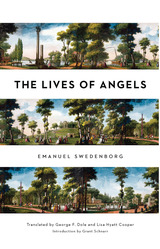
As his professional career was winding to a close, a remarkable spiritual awakening changed the course of his life. He believed that God allowed him to journey in spirit form to the afterlife and talk to angels, devils, and the spirits of the departed—not just once, but continuously, for decades—and he spent the rest of his life recording what he saw.
The Lives of Angels is a collection of Swedenborg’s most striking insights about life in heaven, with vivid descriptions of angels’ homes, their language, their communities, and even their romantic relationships. He tells us that angels are with us throughout our lives, guiding and supporting us, and that any person on earth can become an angel after death if he or she is loving and selfless. The introduction by Grant Schnarr gives readers a modern framework for understanding Swedenborg’s compelling vision of the spiritual world.
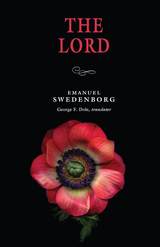
In his short work The Lord, Swedenborg presents an answer to the time-honored question of how Jesus and God are related: he argues that they became in every way one and the same. Throughout his works Swedenborg uses the term “Lord” to refer to Jesus as the embodiment of God. In this work he emphasizes that the traditional trinity of Father, Son, and Holy Spirit should be thought of not as three separate divine Persons that have always coexisted but as three aspects now present within one divine Person—Jesus in his resurrection.
The Lord also touches upon key themes in Swedenborg’s theology: the spiritual reasons why the Lord came to earth; the significance of the death and resurrection of his human form; and the ways in which his coming was foretold in the Old Testament. Throughout the book, Swedenborg provides extensive biblical references to support his arguments. He concludes with a brief chapter describing the New Jerusalem, a reference to both the city described in the book of Revelation and the new spiritual age that is now unfolding.
The Lord is part of the New Century Edition of the Works of Emanuel Swedenborg (NCE), an ongoing translation series. The NCE series incorporates the latest scholarship and translation standards for a more accurate and accessible rendering of Swedenborg’s works. Traditionally titled The Doctrine of the Lord, this short work is often published together with three other short works—Life, Faith, and Sacred Scripture—under the title The Four Doctrines. The Swedenborg Foundation will publish these four titles together in the forthcoming NCE hardcover annotated volume The Shorter Works of 1763.
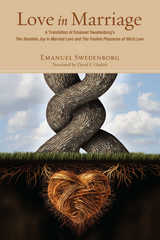
READERS
Browse our collection.
PUBLISHERS
See BiblioVault's publisher services.
STUDENT SERVICES
Files for college accessibility offices.
UChicago Accessibility Resources
home | accessibility | search | about | contact us
BiblioVault ® 2001 - 2025
The University of Chicago Press



